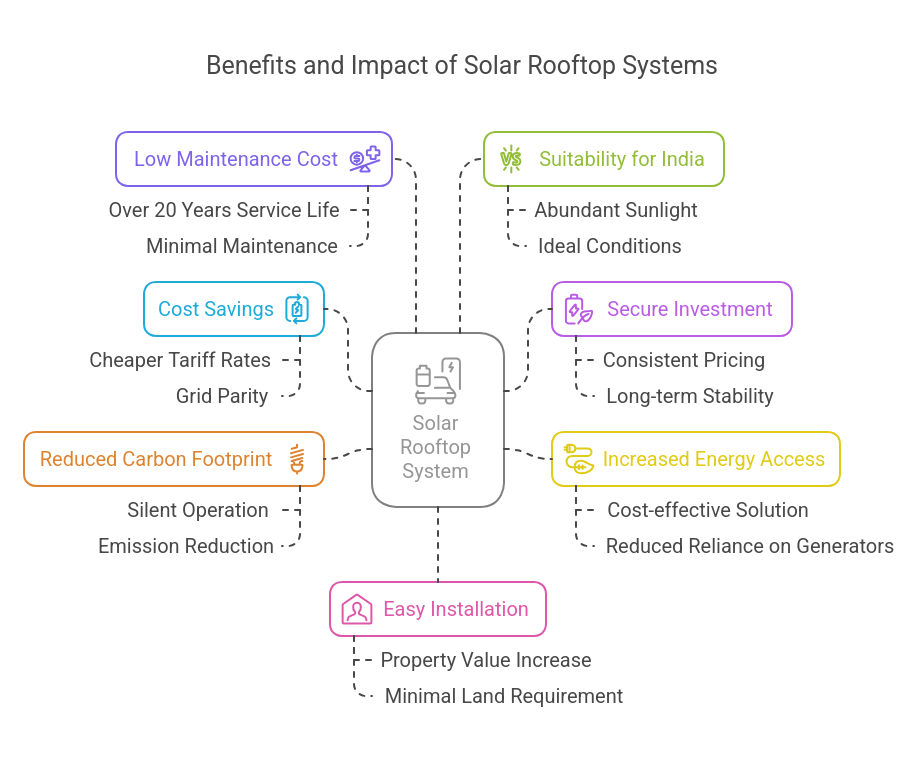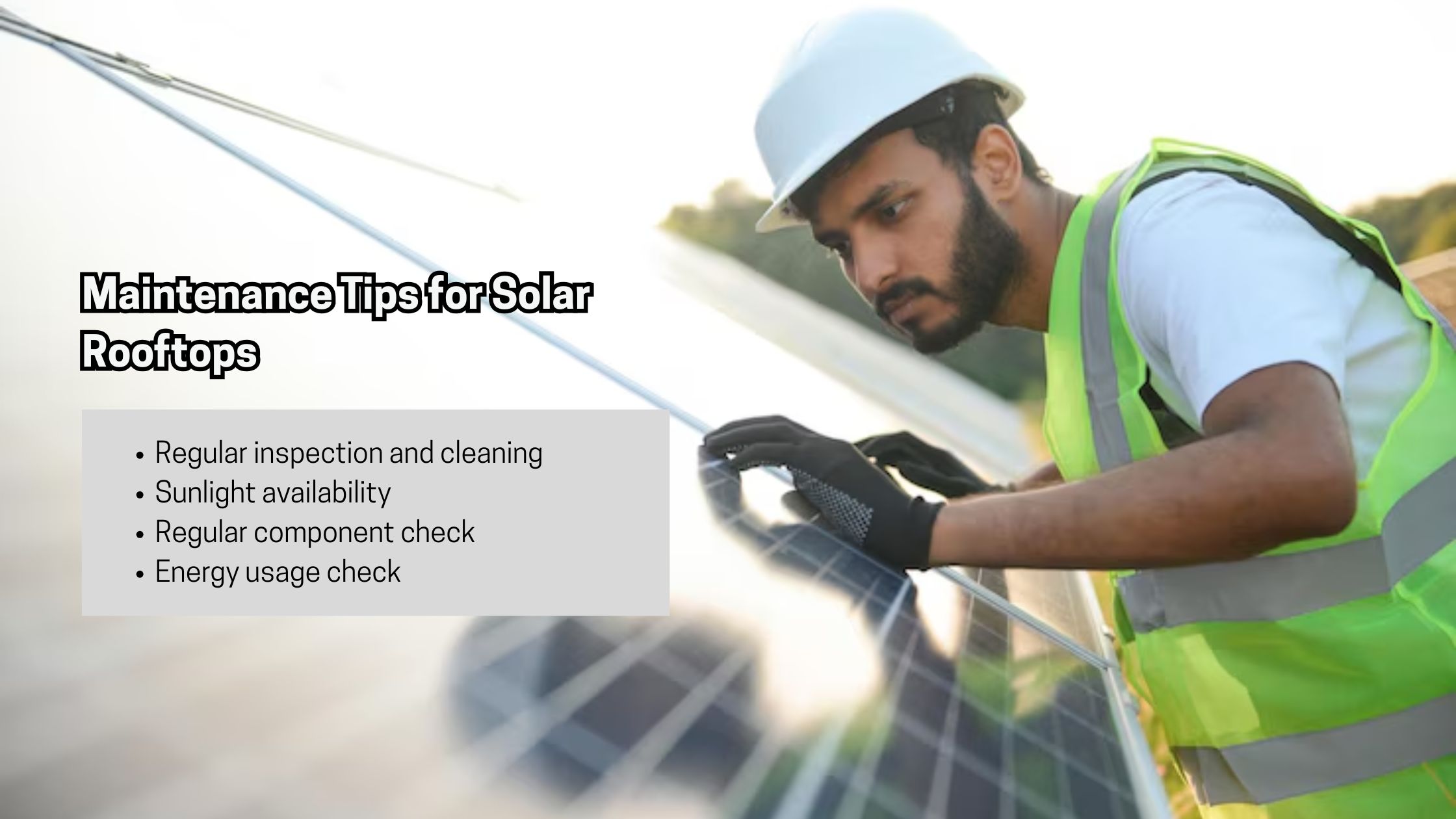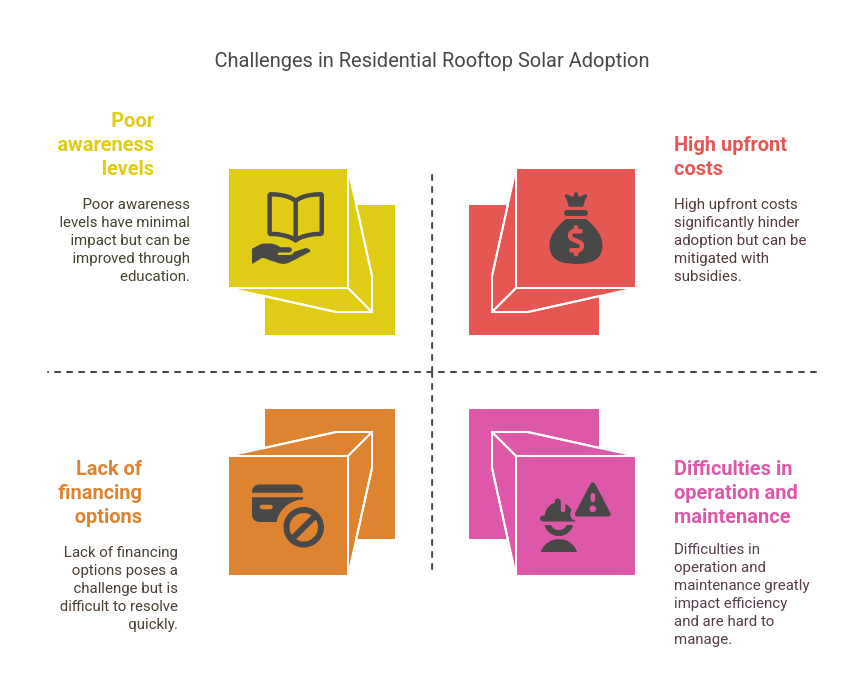Solar energy is a highly abundant and readily accessible power source for humans. In fact, it is believed by some researchers that if we harness all the energy from the sun in just one hour, it can be a way forward to fulfil the energy needs of a country’s population for an entire year. The advancements in technology over the past decade have made capturing solar energy more cost-effective and efficient.
However, one of the main setbacks for solar energy use is the requirement for a significant amount of space. Thankfully, there is a solution to this problem. We can easily overcome the space constraint by utilizing the idle roof space of commercial, industrial, and residential buildings. A reputable Rooftop Solar Company in India can solve this space issue because they have expertise in calculating the area and installing the solar panels as per the area available.
Need for Roof Top Solar Systems
Millions of homes with idle rooftops in India’s urban and rural areas receive ample sunlight throughout the day. These rooftops present an excellent opportunity to harness the energy from the sun and utilise it as a replacement for electricity. Hartek Group empowers homeowners to transform their rooftops into energy sources, helping them generate their own power and contribute to India’s progress in achieving the Sustainable Development Goals.
By utilizing the power of the sun, you can not only reduce your dependence on traditional energy sources but also contribute to a cleaner and more sustainable future. So, let’s dive into the article and discover how rooftop solar systems can help you generate your own power and move India closer to achieving its sustainable development goals.
What is a Solar Roof Top System?
A Solar Rooftop System is a type of solar power system that involves installing solar panels on the roofs of buildings, including commercial, industrial, and residential structures. This process helps generate clean, environment-friendly energy without emitting pollution or harmful gases. Contrary to what some may think, utilizing rooftop solar power is simple enough, and anyone with a suitable rooftop can generate their own solar energy.

Benefits of Rooftop Solar System
The adoption of solar rooftop panels by many industrialists and households in India is on the rise, alongside large-scale installations that account for nearly 87% of solar power generation in the country (source- National portal for rooftop solar). Recognizing this significant growth, the Ministry of New and Renewable Energy (MNRE) has targeted achieving 40 GW of rooftop solar power through the National Solar Mission of India. (source- pib.gov.in)
Here are some of the benefits of a solar rooftop system:
1. Cost savings: Installing rooftop solar panels for homes offers significant savings. Rooftop solar tariff rates are much cheaper than the industrial and commercial tariff rates. In many residential sectors in India, rooftop solar installations are achieving grid parity, allowing building owners to save money on their electricity bills by purchasing less electricity from the grid.
2. Secure investment: Solar rooftops provide a secure investment as the cost of generating electricity can be easily calculated. Unlike traditional electricity prices that fluctuate, the price of power generated by solar rooftops remains consistent. This allows individuals to calculate the cost of generating electricity for the next ten years, providing stability and predictability.
3. Increased access to energy: Solar energy is a cost-effective source of electricity, particularly in areas with insufficient and unreliable power supply. Many people in rural and urban areas still rely on alternatives like diesel generators, which are expensive and cause harm to health and the environment. Rooftop solar panels offer a sustainable solution that reduces operating costs and provides consistent access to electricity.
4. Reduced carbon footprints: Solar panels generate electricity from sunlight, significantly reducing carbon footprints compared to traditional energy sources. They operate silently and emit fewer harmful gases, making them environmentally friendly. Rooftop solar systems play a crucial role in the fight against climate change by providing an effective source of clean energy.
5. Low maintenance cost: Rooftop solar panels require minimal maintenance and have a service life of over 20 years if properly maintained. This low maintenance cost adds to their overall value and makes them a reliable long-term investment.
6. Perfect for India: India is geographically well-suited for solar energy. The country receives abundant tropical sunlight in most regions. With over 300 bright days and clear skies each year, India has ideal conditions for harnessing solar energy. This makes solar power a particularly advantageous and viable option for the country.
7. Easy installation: Solar rooftop systems can be easily installed on the roofs of commercial and residential buildings, requiring minimal land or space. This makes solar energy a practical and sustainable solution. Additionally, installing solar cells can increase the resale value of a property, providing an added benefit.
Challenges of Installing a Rooftop Solar System In India
- Issues in varied solar policies in different states- Some states allow the RESCO (renewable energy service company model) for rooftop solar panels. At the same time, some states deny this model.
- Lack of interest by DISCOMs- DISCOMs fear losing their best-paying customers as they are not sure about the growth of rooftop solar without restrictions.
- Issues in credit facility- A significant portion of credit facility lies undeployed with the banks.
- Taxation issues- Duty inversion is the main challenge to the indigenous solar PV industries.
- Lack of awareness- The general public of India needs to be made aware of the subsidies offered by the government, or they find the princess too cumbersome.
These challenges are not a concern if you have one of the top 3 rooftop solar company in India taking over your project. With the experience of over 30 years and positive feedback from our valuable clients, we are keen to serve for a better future.
Despite the challenges, we have solutions for these problems. This is with our experience and top clientele records. Solutions for these challenges provided by the government of India are:
- Financial incentives and various subsidies by the government.
- Awareness campaigns for the public.
- Decreasing the cost of solar panels and promoting technological advancements.
Rooftop Solar Installation process
The installation process for a rooftop solar system typically involves four steps:
1. Mount installation: The first step is to place brackets on the roof to hold the solar panels securely. It’s important to consider the installation orientation of the panels for optimal energy absorption. In many countries, installing the panels facing north and slightly inclined at an angle of 18-36 degrees is recommended. Using a solar tracker can also help increase energy conversion efficiency.
2. Solar panel installation and electrical wiring: The solar panels are fixed onto the brackets in this step. Universal connectors like MC4 are commonly used for their compatibility with different types of solar panels. The panels can be wired in two ways: series or parallel.
3. Connecting the components: This step involves connecting the solar panels to the inverter. The inverter is then connected to the solar cell input and the grid to generate electricity. Finally, the inverter is connected to the grid.
4. Starting the solar inverter: In the final stage, the main inverter switch of the building is turned on. Most inverters have a digital display that shows detailed information about the rooftop solar production and usage data.
These steps outline the basic process of installing a rooftop solar system, allowing you to harness the sun’s power and generate clean energy for your building.
Maintenance
Maintaining solar panels is quite simple and straightforward. Although they don’t have any moving parts, it’s still important to ensure they are clean and free from obstructions. To keep them in top shape, it’s recommended to have your solar system checked once a year for dust. And if you have installed that panel from a leading rooftop company in India, you don’t have to worry about the service. Our personnel will take care of the maintenance and care portion as we have a lifetime service facility for our valuable clients.
Remember, the main goal is to keep your solar panels clean and unobstructed, allowing them to absorb sunlight effectively and generate clean, renewable energy for your residential and commercial space.
Factors to Consider While Selecting Rooftop Solar Company in India
When choosing the best rooftop solar system for your home, consider the following factors:
- Certifications: Opt for solar panels from a company that is BIS (Bureau of Indian Standards) certified to ensure quality and reliability and follow all the regulations of MNRE.
- Inverter efficiency: The inverter’s efficiency directly impacts the power output and savings of the system. Look for high inverter efficiency to maximize the benefits.
- Type of panels: Consider the space on your rooftop and choose between monocrystalline and polycrystalline panels. Monocrystalline panels are more efficient and expensive, so assess your space and budget before deciding.
- Cost: While cost is a factor, prioritize quality, warranty periods, installation, and equipment quality over choosing the cheapest option. Inferior components may save money initially but can impact efficiency and reliability in the long run.
With the above factors in mind, you can choose the best rooftop solar system for your residential or industrial setup from the best rooftop solar company in India.
In summary, solar power offers low running costs, reduced greenhouse gas emissions, low maintenance costs, suitability for India’s climate, and easy installation. For reliable solar solutions, contact Hartek Group – your trusted partner in renewable energy. These benefits make solar energy an attractive and beneficial choice for both industrial and non-industrial consumers, and that too by a reputable company.
FAQ’s:-
1. What is a Rooftop Solar System?
A Rooftop Solar System is a setup where solar panels are installed on building roofs to generate electricity using sunlight, reducing reliance on the grid.
2. How does a Rooftop Solar System save money?
It reduces electricity bills by generating free solar power, and with government subsidies, the installation cost becomes more affordable.
3. What are the benefits of installing a Rooftop Solar System?
It lowers energy costs, reduces carbon footprints, requires minimal maintenance, and increases property value while ensuring energy security.
4. Is my rooftop suitable for a Rooftop Solar System?
Most rooftops are suitable, but factors like space, sunlight exposure, and panel type determine efficiency. A solar expert can assess your roof.
5. How long do Rooftop Solar Systems last?
With proper maintenance, a rooftop solar system can last 20–25 years, offering long-term savings and sustainable energy solutions.






